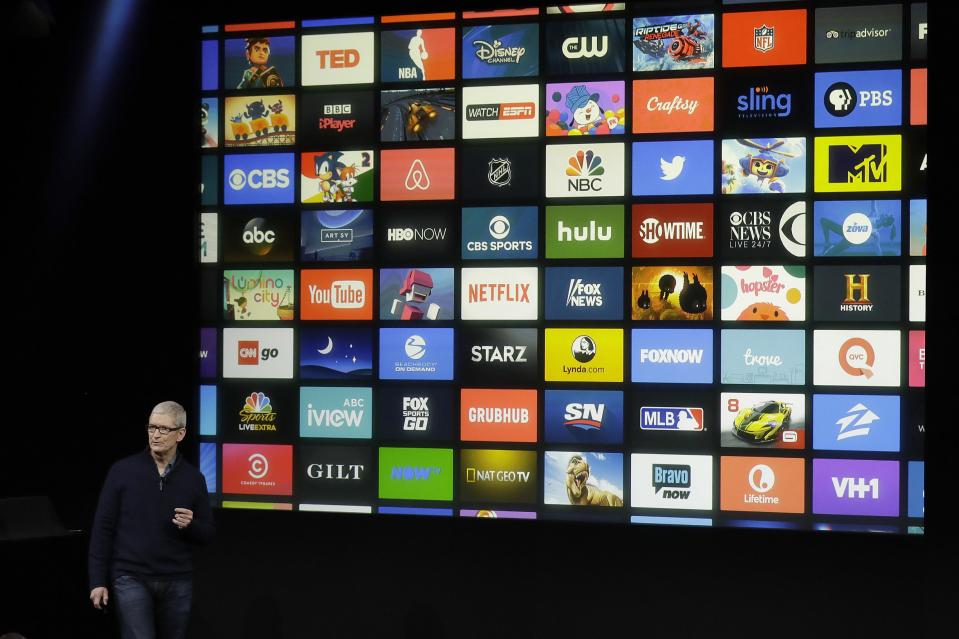Connected TVs could be the 'next frontier' in digital advertising: analyst

Targeted advertising may soon be appearing on your connected TV.
Facebook (FB) will begin using its advertising tool Audience Network to sell advertisements on connected devices such as Apple (APPL) TV and Roku TV apps, according to Recode.
The social media behemoth has made plans to distribute video ads that run on apps available on TV set-top boxes in partnership with publishers A&E and Tubi TV.
This opens a lot of opportunity for a company like Facebook, which collects data on its users for the purposes of targeted advertising. For consumers who use the A&E app and Tubi TV app on their smart TV, this would mean seeing more personalized advertisements on their smart televisions. For example, posting about your engagement on Facebook might mean seeing more advertisements for wedding dresses and floral arrangements. Searching the web for a new Volvo could produce car commercials on your big screen.
This is a big step forward for marketers in a still nascent market.
“It is interesting on any level to see connected television as the next frontier in digital advertising,” said Paul Verna, a senior analyst at eMarketer.
Connected TV allows digital advertisers to broaden their platforms in a way that’s similar to how traditional television advertisers have expanded their reach in the digital age.
“People currently do ad syncs from TV to digital,” said Rob Griffin, chief innovation officer at Boston-based digital agency Almighty. “There is a lot of interest from TV dollars to digital dollars to try to do the reverse of that.”
For more and more Americans, TVs connected to the internet, or “connected TVs,” are growing in popularity. Market research company eMarketer predicts that 60% of households will be using one by 2019.
Verna’s bullish attitude on connected TV advertising comes in part from the way people are exposed to the advertisements. In “lean back mode,” a descriptor for more passive information consumption, viewers who are relaxing on the couch watching television are less likely to skip or disable ads than they would be on a computer. However, advertisers can collect the kind of data that companies have been able to track from digital ads as well.
“It gives you the best of TV advertising and the best of digital advertising,” Verna said.
Advertising on connected televisions, however, faces more obstacles than traditional mobile advertising. One such issue has been the struggle to find a standardized way to measure audience size and demographics on over-the-top boxes, as Wes Nichols, the senior vice president of strategy for Neustar, wrote in Forbes earlier this month.
“It’s hard to create coordinated experiences—much less real-time coordinated experiences—if sharing data across all the points requires a separate opt-in form at every point along the way,” Nichols wrote.
Verna calls connected TV advertising “a complex ecosystem” made up of players including including set box top makers and TV makers such as Sony and Samsung, which also sell ads on their own device platforms.
The technology is young and Facebook is in the early stages. Recode reports that the social network is not selling advertising spots to marketers just yet. But Verna sees this as a major growth area for advertisers.
“We are seeing a lot of experimentation,” he said. “And there’s a lot of promise.”
Just a few years ago, mobile advertising was considered to be the new frontier — a market people have increasingly worried has become oversaturated. In 2015 eMarketer report predicted that mobile advertising will account for most of the growth in the global ad market in the next four years as a result of increased mobile usage.
Griffin, though, is convinced that there is still room for growth in the mobile market.
“Most mobile ads are terrible, especially in terms of the quality of mobile advertising load time pages,” he said. “Maybe more than 90% of people just aren’t doing it well.”

 Yahoo Finance
Yahoo Finance 